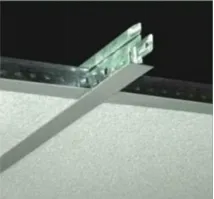- Afrikaans
- Albanian
- Amharic
- Arabic
- Armenian
- Azerbaijani
- Basque
- Belarusian
- Bengali
- Bosnian
- Bulgarian
- Catalan
- Cebuano
- Corsican
- Croatian
- Czech
- Danish
- Dutch
- English
- Esperanto
- Estonian
- French
- German
- Greek
- Hindi
- Indonesian
- irish
- Italian
- Japanese
- Korean
- Lao
- Malay
- Myanmar
- Norwegian
- Norwegian
- Polish
- Portuguese
- Romanian
- Russian
- Serbian
- Spanish
- Swedish
- Thai
- Turkish
- Ukrainian
- Uzbek
- Vietnamese
ຕ.ລ. . 01, 2024 17:29 Back to list
Access Panels for Rated Ceiling Applications and Their Importance in Building Design
Understanding Rated Ceiling Access Panels A Practical Guide
Access panels are essential components in building design, providing necessary openings in ceilings for various utilities such as plumbing, electrical wiring, HVAC systems, and more. Among the many types available, rated ceiling access panels hold particular importance due to their ability to maintain fire resistance and meet safety codes.
What is a Rated Ceiling Access Panel?
A rated ceiling access panel is specifically designed to provide access to crucial building systems while ensuring fire resistance. These panels are often used in commercial and industrial settings, where fire safety is paramount. The rating of the access panel is determined by standardized testing, measured in hours, indicating how long the panel can withstand fire without allowing flames or heat to penetrate through. Common ratings include 1-hour, 2-hour, or 3-hour ratings, which inform builders and architects of the panel's protective capabilities.
Why are They Important?
The importance of rated ceiling access panels cannot be overstated. In the event of a fire, these panels help compartmentalize the spread of flames and smoke, thereby protecting both life and property. By effectively sealing off areas, they provide critical time for evacuation and response efforts. Furthermore, building codes often require the use of fire-rated materials in specific locations, making these access panels a compliance necessity in many projects.
Applications and Installation
rated ceiling access panels

Rated ceiling access panels can be installed in various locations within a building, including ceilings of storage areas, mechanical rooms, and other critical spaces. Their installation generally involves a few straightforward steps
1. Selection of the Appropriate Panel Choosing the right panel involves considering its fire rating, size, and the specific application. Ensure that the panel can accommodate the proper insulation and is suitable for the given environment (e.g., moisture-resistant for bathrooms).
2. Cutting the Opening The area where the access panel will be installed needs to be measured carefully. The opening should be cut precisely to ensure a snug fit, which is vital for maintaining fire resistance.
3. Mounting the Panel The access panel is typically mounted flush with the ceiling and may require specific hardware to secure it firmly. Ensuring that it aligns with surrounding materials is essential to maintain the aesthetic and functional integrity of the ceiling.
4. Sealing After installation, the edges of the panel should be sealed properly to maintain its fire rating. Using fire-rated sealants can enhance the panel's effectiveness and compliance with fire safety standards.
Conclusion
In conclusion, rated ceiling access panels play a crucial role in ensuring the safety and functionality of buildings. By understanding their purpose, applications, and installation processes, architects, contractors, and property owners can make informed decisions. These panels are not merely functional components; they are vital elements in creating safer, more resilient structures. Adhering to building codes and considering fire safety in design choices will contribute to better outcomes for occupants and property alike. Whether it's a new construction or retrofitting an existing building, integrating rated access panels is a prudent investment toward ensuring long-term safety and compliance.
-
Transform Interiors with PVC Gypsum Ceiling: A Stylish, Durable, and Moisture-Resistant SolutionNewsMay.19,2025
-
The Smart Interior Upgrade: Discover the Durability and Versatility of Gypsum Ceiling Access Panel SolutionsNewsMay.19,2025
-
The Smart Choice for Interior Design: Discover the Value of PVC Gypsum Ceiling SolutionsNewsMay.19,2025
-
Mineral Fiber Ceiling Tiles: The Smart Blend of Performance and AestheticsNewsMay.19,2025
-
Mineral Fiber Ceiling Tiles: The Superior Choice Over Gypsum for Sound and Fire SafetyNewsMay.19,2025
-
Mineral Fiber Ceiling Tiles: Eco-Friendly Strength and Style for Every CeilingNewsMay.19,2025







